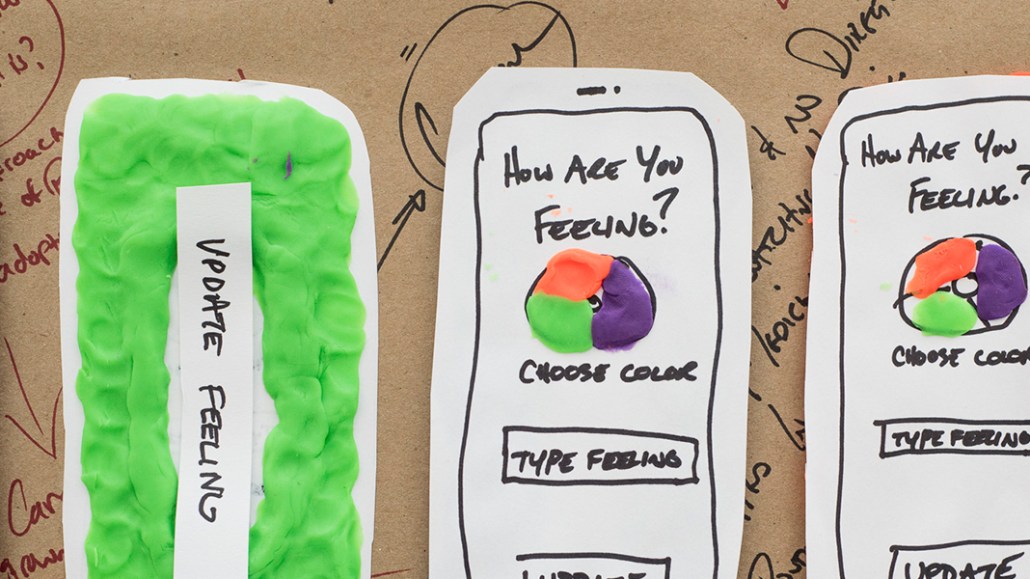Save 50% on a 3-month Digiday+ membership. Ends Dec 5.

by Kirsty Whelan, VP, Strategy, imre
In 2017, we reached a milestone – more than half of the world’s population became connected to the internet. That connectivity can be a powerful tool – improving access to global information, promoting positive local and regional economic outcomes, supporting educational initiatives and most certainly bringing us closer to the experiences of people on the other side of the world.
While that connection may have increased our collective capacity for compassion, in other ways the proliferation of personal technology and social media has diminished our capacity for empathy. For example, in 2014, scientists at UCLA found that sixth-graders who went five days without glancing at a screen were better at reading human emotions than their classmates from the same school who spent hours with devices during that same time.
Putting aside the societal impact of a decline in empathy, it’s fair to assume that the trend disproportionately affects our health care system. John Stamatopoulos is president of Empathetics, which provides innovative empathy and interpersonal skills training for medical professionals, and he explained how technology enables compassion fatigue in treatment settings.
“When they spend up to 60 percent of their time inputting information into electronic medical records, clinicians don’t get to spend as much time with patients,” Stamatopoulos said. “Instead of improving healthcare, it’s dehumanizing it, and that’s a catalyst for the decline of empathy.”
Stamatopoulos’ company helps clinicians rediscover joy and fulfillment in the medical practice and he explained how healthcare brands can support its mission.
“Pharma has always excelled at educating clinicians about disease states and treatments. If there is a way to give guidance for how to better initiate conversations with patients, to facilitate a meaningful interaction that addresses the likely concerns of the patient, rather than just listening to complaints, that’s an opportunity.”
Ad position: web_incontent_pos1
Healthcare marketers can also share a role in offsetting this trend.
First, by supporting more initiatives that promote patient engagement — advocating for a dialogue about wellness and not just illness. In this approach, unsurprisingly, engaging patients like people can have a transformative impact on disease awareness and treatment adherence. The key to this is listening closely to the patient’s therapeutic and emotional experiences and establishing an empathic framework for social and digital media engagement.
At Imre Health, our strategy and creative teams are trained in key empathic methodologies to help pharma brands engage more compassionately with patients and healthcare providers. These methodologies are simple and can be implemented on any brand marketing team.
5x Why
As the complexity of marketing in the digital landscape increases, we need to apply more processes for collaborative thinking, to eliminate silos and thinking biases on our teams. One simple, but effective tool to practice within your team is 5x Why. This iterative problem-solving approach was developed by Sakichi Toyoda to evolve Toyota Motor Company’s manufacturing methodologies. It starts with identifying a problem:
Ad position: web_incontent_pos2
We don’t think patients will share their healthcare experiences on Facebook.
WHY 1x: They are scared to reveal private information to friends and family.
WHY 2x: They don’t want to be judged negatively.
WHY 3x: Feeling judged will hurt their self-esteem.
WHY 4x: Patients care about what their friends and family think of them.
WHY 5x: Patients want to feel understood.
Asking why five times, enables you to get to the root of a problem and brings better focus to your approach for solving that problem with a marketing program.
Designing with and for
With our problem identified, we want to create a participatory construct for communication and design solutions. Typically we are only focused on designing for patients or clinicians, but if we were to instead welcome them into the fold to weigh in on the ideation and prototyping process the end result would be more authentic engagement.
Non-judgmental feedback
When prototyping new ideas based on empathic methodologies, set up a framework for non-judgmental feedback. That means sharing your feedback in the form of a question and doing your best to eliminate any bias in your word choice. You’re trying to shape the concept with a new perspective and a spirit of curiosity, instead of shutting down the idea or the ideator. The prototyper is responsible for capturing the feedback and incorporating solutions in the next iteration of the idea.
If pharma marketers and healthcare communicators can incorporate these methodologies in their planning practice, it will help us maximize the role of technology in making people feel better and demand new accountability for promoting empathy across the industry.
More from Digiday

Ulta, Best Buy and Adidas dominate AI holiday shopping mentions
The brands that are seeing the biggest boost from this shift in consumer behavior are some of the biggest retailers.

Digiday+ Research Subscription Index 2025: Subscription strategies from Bloomberg, The New York Times, Vox and others
Digiday’s third annual Subscription Index examines and measures publishers’ subscription strategies to identify common approaches and key tactics among Bloomberg, The New York Times, Vox and others.

U.K. retailer Boots leads brand efforts to invest in ad creative’s data layer
For media dollars to make an impact, brands need ad creative that actually hits. More CMOs are investing in pre- and post-flight measurement.
Ad position: web_bfu





